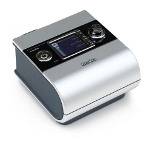Ruinednose,
The biggest problem with the data that you posted is the hour long period where you did not use your machine. If this common pattern---i.e. taking the mask off in the morning and going back to sleep for an hour or so, then the untreated apnea for that one hour of sleep may be the main reason you are still dealing with brain fog issues: The number of apneas and hypopnea in that one hour of untreated sleep is likely far greater than the total number of events scored by your machine during the rest of the night.
why so many CA (clear airway apneas?)
The total number of CAs (5 for the ENTIRE night) is actually rather low and is of no concern by itself. There's also a chance that one or more of the CAs is NOT a real CA in terms of what would be scored on a PSG: They may be post-arousal "centrals" that occur as you are falling back asleep and the control of your respiration is being handed back to your autonomic nervous system. That kind of CA is NOT scored on a sleep test because it doesn't start in sleep.
i don't feel i get deep sleep especially in the late half of the night with frequent awakenings.
Once PAP is well optimized in terms of controlling the obstructive events, it doesn't do much to fix
other sleep problems. Your obstructive events are well controlled at your current settings. So the question then becomes:
Why is your sleep still fragmented? The answer to that question is NOT "undertreated OSA", and so tweaking the settings on your BiPAP is not likely to fix this problem. You need to tackle whatever the underlying problem actually is.
So what's triggering those wakes? And how do you react to them? And how many times a week are they a serious problem?
Fixing sleep maintenance insomnia is not particularly easy: Many sleeping medications do a good job in helping you get to sleep, but they don't keep you asleep, particularly in the second half of the night; still they can take the edge of the problem for some people. Sometimes CBT for Insomnia can help; the CBT for Insomnia usually focuses on reducing the disruption of the middle of the night wakes so they don't start a bad positive-feedback loop that keeps you more awake once you first wake up. A rigorous, fixed wake up time where you force yourself to get up at the same time seven days a week
regardless of how little you slept and how tired you are can also help force the body to learn how to NOT wake up excessively during the second half of the night.
what should i do to better my therapy.
Don't sleep for an hour without the mask on your face. And start working on the sleep maintenance insomnia as its own separate issue rather than expecting tweaking PAP settings to fix that problem.
i don't know what the respiratory rate means or tidal volumes ect
Respiratory Rate = number of breaths per minute that you take.
Tidal volume = the amount of air you inhale in one inhalation (measured in mL)
Minute Ventilation = the total amount of air you inhale over the course of one minute. (measured in L/min). In general,
- Minute Ventilation = (Tidal Volume * Respiratory Rate)/1000 [The /1000 coverts mL/min into L/min]
Insp. Time = length of one inhalation measured in seconds
Exp. Time = length of one exhalation measured in seconds
Since each breath consists of one inhalation and one exhalation, in general,
- Respiratory Rate = 60/(Insp Time + Exp Time)
There is a fair amount of variability in all these numbers in normal people. Tidal Volume and Minute Ventilation depend on both the size of the person and whether there are existing lung issues such as asthma or COPD.
In quality sleep the Respriatory Rate is usually pretty stable; but some variation (spikes in the RR graph) is pretty common in REM sleep. Waking Respiratory Rate is more variable than Sleep Respiratory Rate. So sometimes a ragged RR graph can indicate a lot of plain old "restlessness" during the night.
















